




Introduction to the Sense of Touch
The human body has different types of senses, i.e. taste, sound, touch, smell, and vision.
The sense of touch is the most used sensory tool in our body and also is the largest sense organ of the body. Skin acts as the sense organ for touch, and it is spread all across our body.

Sense of Touch
The touch is a primary sense that we use to identify a lot of substances in daily life.
From touching ice to feeling cold chills to getting a sudden shock on touching a hot pan, we understand temperatures by the touch.
Touch also helps to differentiate between a soft cotton ball to a rough jute bag. Hence, we understand smoothness or roughness.
We can detect a touch on any part of our body, and every touch sends a unique signal to our brain, allowing us to understand where we are being touched.
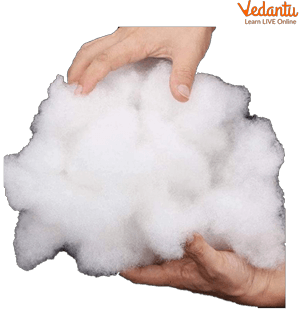
Touching Different Objects for Different Sensations.
Sense Organs
Sense is a stimulus that we understand through different receptors in our body. Those receptors of the senses are called sense organs. We have in total 5 sense organs, i.e. eyes, ears, tongue, nose, and skin. These organs detect various different stimuli, which are light, sound, taste, smell, and touch.
Types of Senses
Vision
Our vision or the visuals that we can see is through our eyes. The eyes are a very important sense organ that allows us to see our environment. The eyes are sensitive to light, and the environment sends the images to our brains.

Eye
Taste
Taste is the sense that is received by us through the tongue. The tongue is a key sense organ that allows us to taste the flavours in our food because of the taste buds. These taste buds on the tongue can sense different tastes.
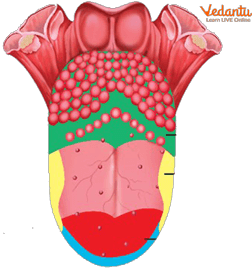
Tongue
Sound
We understand with the help of our ears. Ears are the auditory sense organs and let us perceive sounds. We perceive sounds as vibrations, and the vibrations in the air are captured by the ears.
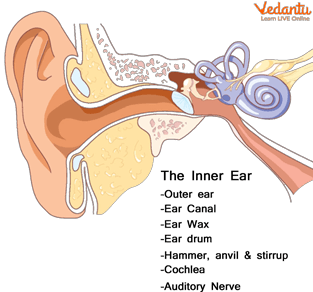
Ear
Smell
The sense of smell is received by the nose. The nose is the sense organ that works alongside the tongue to give us the best sense of flavours in our food. It helps us to perceive all different kinds of smells, and that can be detected by the olfactory receptors, which are minute hair-like outgrowths in the nose.
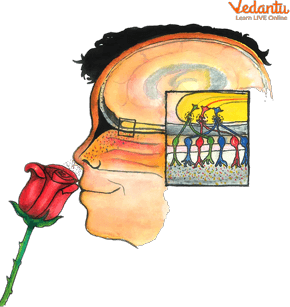
Smelling Through the Nose
Touch
Touch is felt by the skin. The Skin is the largest sense organ of our body. It can detect the sense of touch and anything that has to be felt by touch.
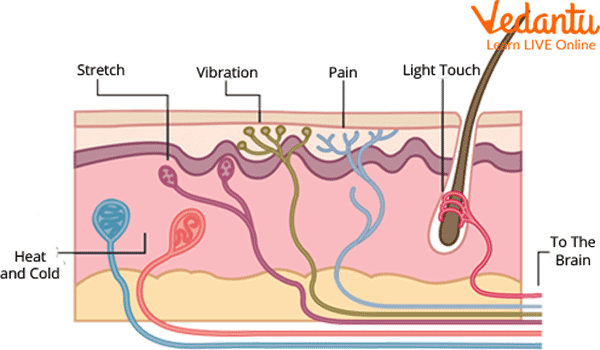
Skin
Examples of Sense of Touch
We can sense temperature, be it cold or hot. Touching boiling water will let us feel the heat.
Touching ice cubes from the refrigerator allows us to feel cold.
We can sense the texture of a substance, be it smooth or rough. Touching a cement wall shall feel rough. Touching a silk cloth will feel very smooth.
We can sense if a substance is solid or liquid. Touching water or oil will allow us to feel a liquid. Touching a piece of iron will feel solid.
We can experience emotions through touch as well. A pat on our shoulders makes us feel proud. Whereas slapping someone shows anger and makes us experience pain.
The Most Sensitive Organ in Our Body
It is the skin that is the most sensitive organ of our body.
Skin is a flexible surface with hair, sweat glands and nails.
Our entire body is covered with a skin layer.
The skin surface has nerves underneath that allow us to understand the location and type of touch by sending the signal to the brain.
Summary
The different sense organs in the human body can detect different kinds of stimuli. Out of all the sense organs, the sense of touch is perceived by the most widespread sense organ. This sense is governed by two sets of sensory nerves in the body. The sense of touch becomes weaker with old age. The sense of touch is the first sense that develops in a baby. We can differentiate between the touch of our dear ones. A touch can make you feel scared or happy.
FAQs on Sense of Touch
1. What can we feel using the sense of touch?
The sense of touch is the most used sensory tool in our body and also is the largest sense organ of the body.
We can understand temperatures by the touch, for example, heat on touching the boiling water.
We can understand smoothness or roughness, for example, cotton is smooth.
We can detect pressure on any part of the body and how much force is applied to that region.
2. What are the various types of senses that a human can experience?
Sense is a stimulus that we understand through different receptors in our body. Those receptors of the senses are called sense organs. There are 5 sense organs in our body, i.e. eyes, ears, tongue, nose, and skin. These sense organs detect various different stimuli that include light sensed by the eyes, sound, i.e. sensed by the ears, taste, i.e. sensed by the tongue; smell, i.e. sensed by the nose; and touch, i.e. sensed by the skin.
3. What is the use of skin?
The skin allows a sense of touch, which helps us to perceive our surroundings. Any change in our surroundings that can temperature, touch, force, etc., can be detected by the skin. It covers our entire body and hence is the most important sense organ having every inch of it as a signal receiver. This allows our body to adjust to the surroundings and also acts as the first protective layer for our body.









